Problem Description
The MSG solid model is used to predict the effective viscoelastic properties of a plain weave composite using a two-step approach. The first step predicts the effective viscoelastic yarn properties based on the elastic fiber and viscoelastic matrix properties at the microscale. Instead of fitting Prony series for yarn properties, SwiftComp provides another option to define the viscoelastic properties of yarns using general time-dependent properties. This will avoid the efforts in fitting Prony series and the inaccuracies in the fitting.
The second step takes the effective yarn properties and matrix properties to predict the viscoelastic properties of weave composites. The microscale and mesoscale models are given as
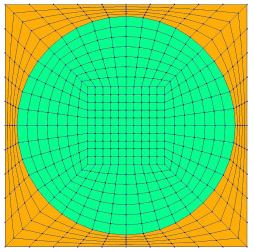
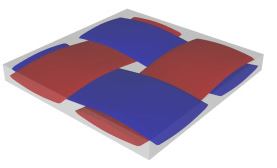
Since the viscoelastic properties are defined using Prony series or time-dependent properties, users need to input a lot of information. To simplify this process, TexGen4SC2.0 provides a function to let users import the properties from a text file. An example of defining viscoelastic properties at the microscale is given as

The first line is used to define the time increment. In this example, the first line means the time start from $$10^0$$ to $$10^{14}$$ and the increment is $$10^1$$. Therefore, this analysis will be performed at {$$10^0$$,$$10^1$$,$$10^2$$, …, $$10^{14}$$}.
The second line is used to indicate the separation from the time increment to the material properties, which is expressed using “***”.
For the microscale, the matrix is viscoelastic properties which are expressed using Prony series. The fiber is the linear material. The format of the material definition is the same in the swiftcomp input file and users can find details from the SwiftComp user manual. In this example, the prony series of the matrix are given as
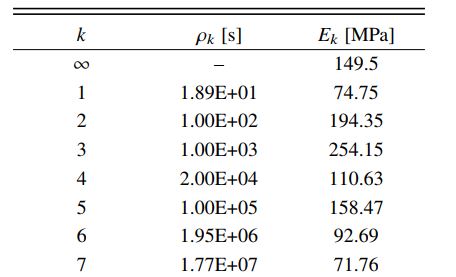
Software Used
The example will be solved using the TexGen4SC 2.0.
Solution Procedure
Below describe the detailed step by step procedure you followed to solve the problem.
Solution Procedure
Below describe the detailed step by step procedure you followed to solve the problem. It is better to also accompany this document with a youtube video.
* step1 Create mesoscale plain weave SG with the yarn geometries given as

* step 2 Create plain weave pattern as

* step 3 Upload the text file containing material properties. Users are freely to choose any FTP app they like and follow the instruction on cdmHUB to create the connection between the local computer and cdmHUB server. FileZilla is used here as an example here, and the text file should be upload to the current session (data/sessions/number)
(Image(filezilla.jpg) failed - File not found)
* step 4 Go to Homogenization->Microscale and select viscoelastic analysis. Keep the default options and select import.
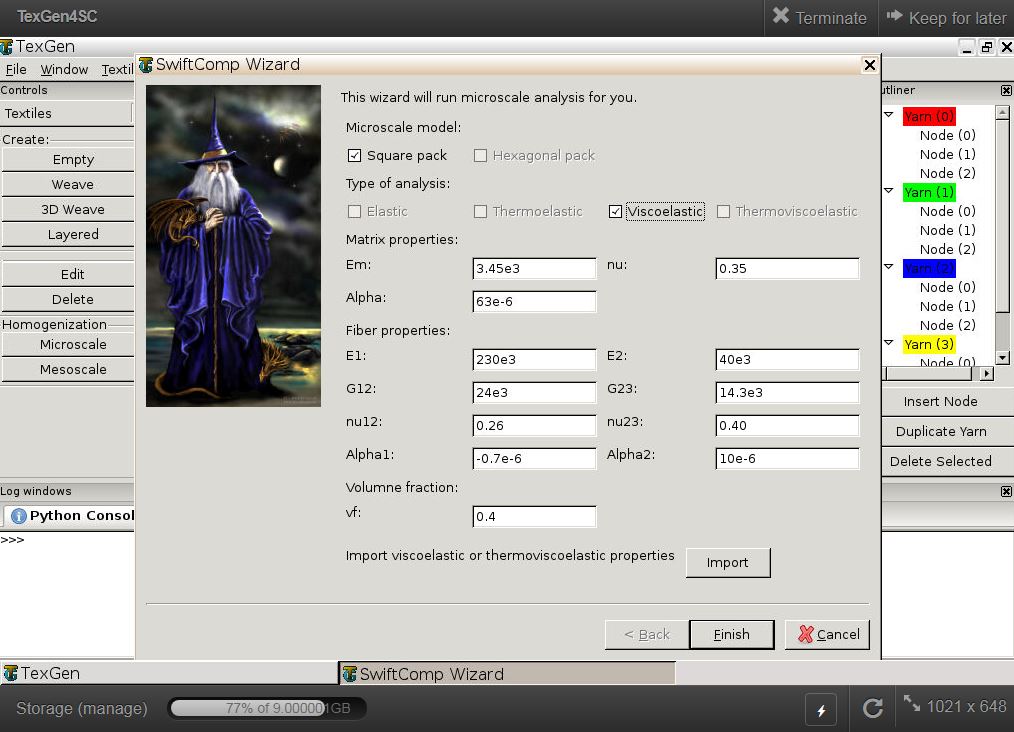
* step 5 You will find the text file you just uploaded and select that file. Then, click finish and the viscoelastic properties of yarns will be pop up after swiftcomp analysis
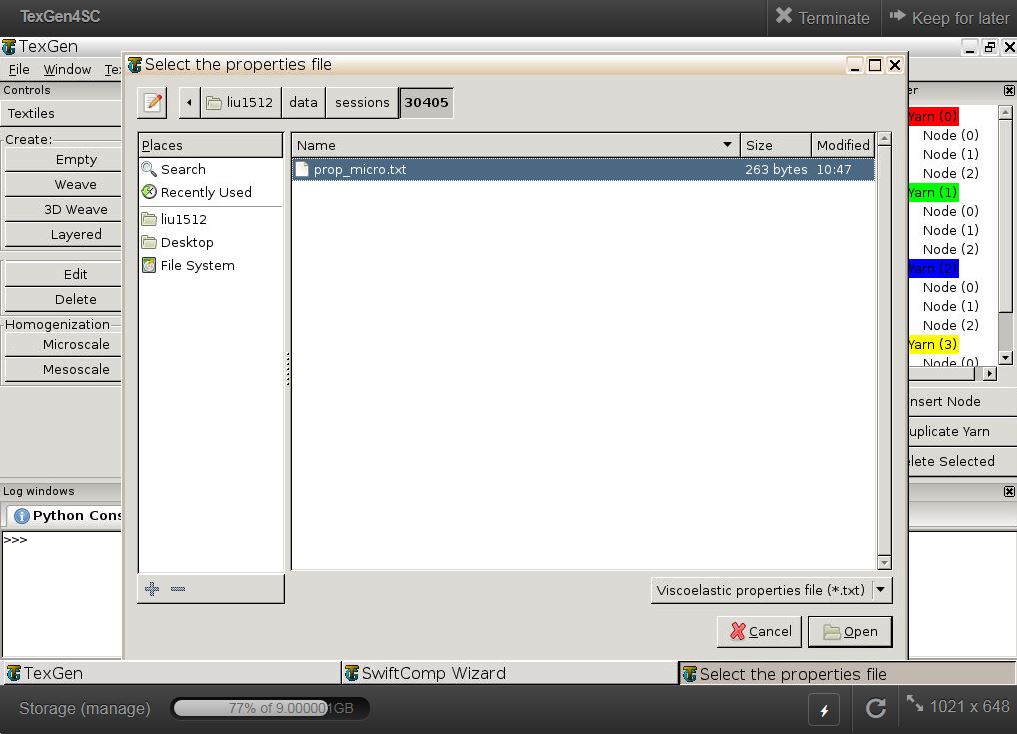

* step 6 Now you are ready to perform mesoscale analysis. Go to File->Export->SwiftComp File, define the voxel mesh and run viscoelastic analysis using the plate model. Click “Select file”
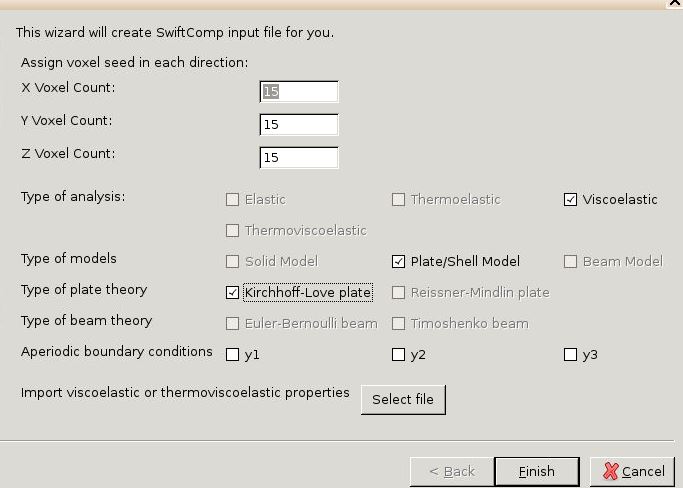
The file named “prop_meso.txt” is generated by the microscale analysis so that users don’t need to perform this file manually.
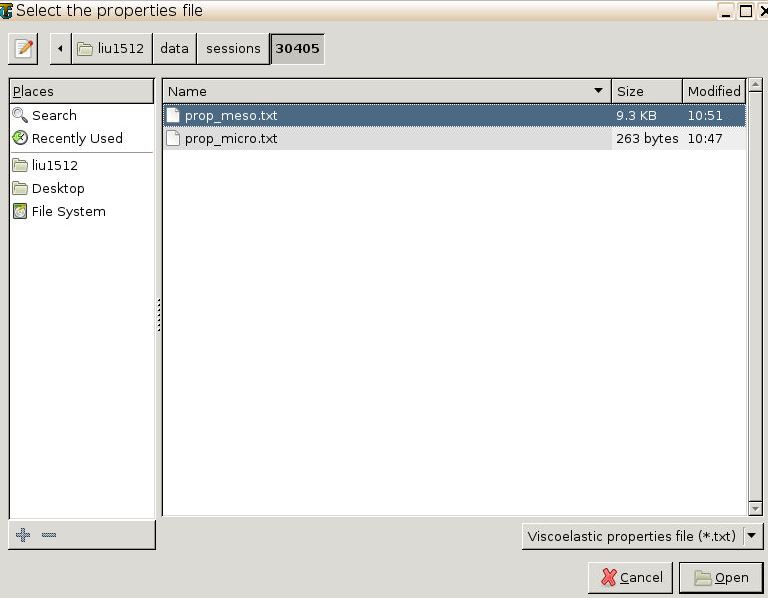
* step 7 Save the swiftcomp input file and click Homogenization->Mesoscale. The effective ABD matrices of this single-ply plain weave laminate is given as:
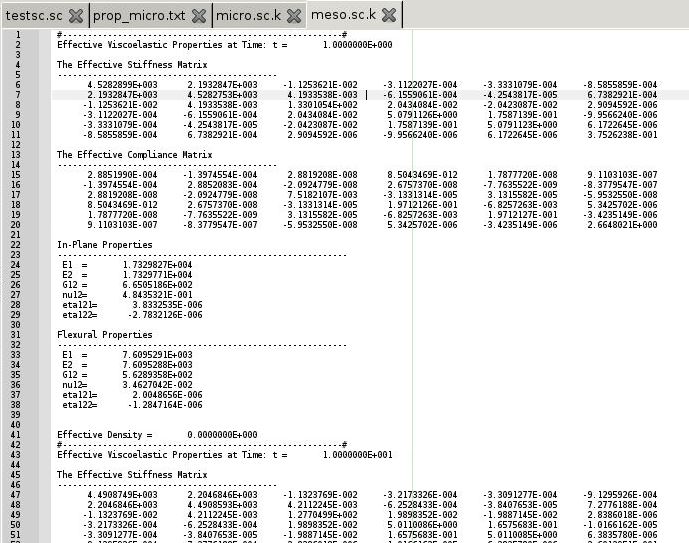
For details about the MSG viscoelastic theory, please refer to the reference paper.
References
- Liu, X., Tang, T., Yu, W. and Pipes, R.B., 2018. Multiscale modeling of viscoelastic behaviors of textile composites. International Journal of Engineering Science, 130, pp.175-186.